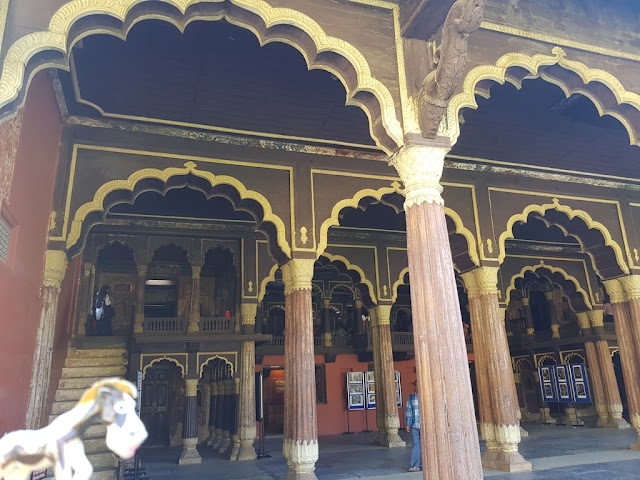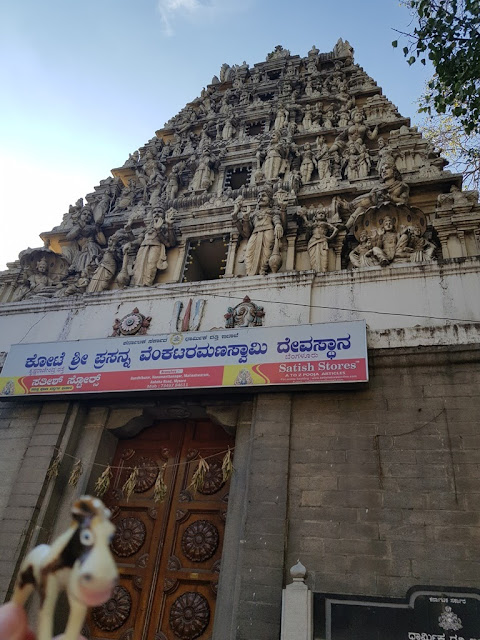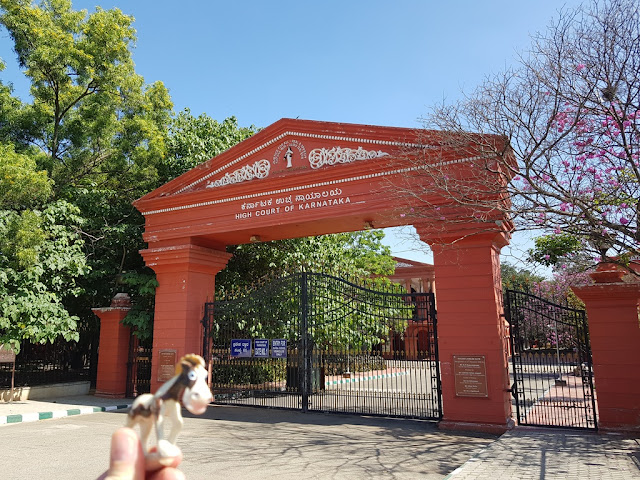Let' start our today trip around Bangalore at the gate, where everything started. In the first half of 16th century,
Kempe Gowda I, a chieftain of the Vijayanagara Empire, founded the modern Bangalore. One of its first building was the Bangalore Fort.
Let me introduce you to Kempe Gowda I and his horse.
Let's enter the gate.
In fact all that remains of the fort is the Delhi Gate and remnants of two bastions. After they captured the fort in 1791, the British started dismantling it, a process that continued till the 1930s. Most of it is visible on the picture below.
Together with a small holy cow.
The last ruler of Mysore, the kingdom Bangalore was part of before English invasion, was Sultan Tipu. Let's visit his palace.
In fact it is a
Summer Palace, so it is quite open.
The structure was built entirely teak and stands adorned with pillars, arches and balconies.
There are beautiful floral motifs embellishing the walls of the palace.
It is believed that Tipu Sultan used to conduct his durbar (court) from the eastern and western balconies of the upper floor.
And there is a hinduism Kote Venkataramana Swamy temple just next to it, built in 1689 by King Chikka Devaraja Wodeyar, then ruler of Mysore.
This is the entrance to the temple.
In fact there are plenty of hinduist temples around Bangalore.
Some of them are not even higher than the buildings nearby.
This is the entrance to the area sourounding one of the most important hinduism temples, the Big Bull temple.
But people of different religions also can find places for their prayer.
Like very European in the style St. Patrick's Church.
or one of the main churches in the city - St. Mary's Basilica.
I hope that you have enjoyed our trip to Bangalore. It is a huge city so we still haven't seen everything. Maybe we will visit it one more time one day.














































